Dystopian apparel: The making of âThe Handmaidâsâ blood-red robes
There are plenty of elements in
Costume designer Ane Crabtree (âWestworld,â âMasters of Sexâ) shared her secrets (and photo stash) with The Times, detailing the creative process behind one of the most distinctive costumes on television.
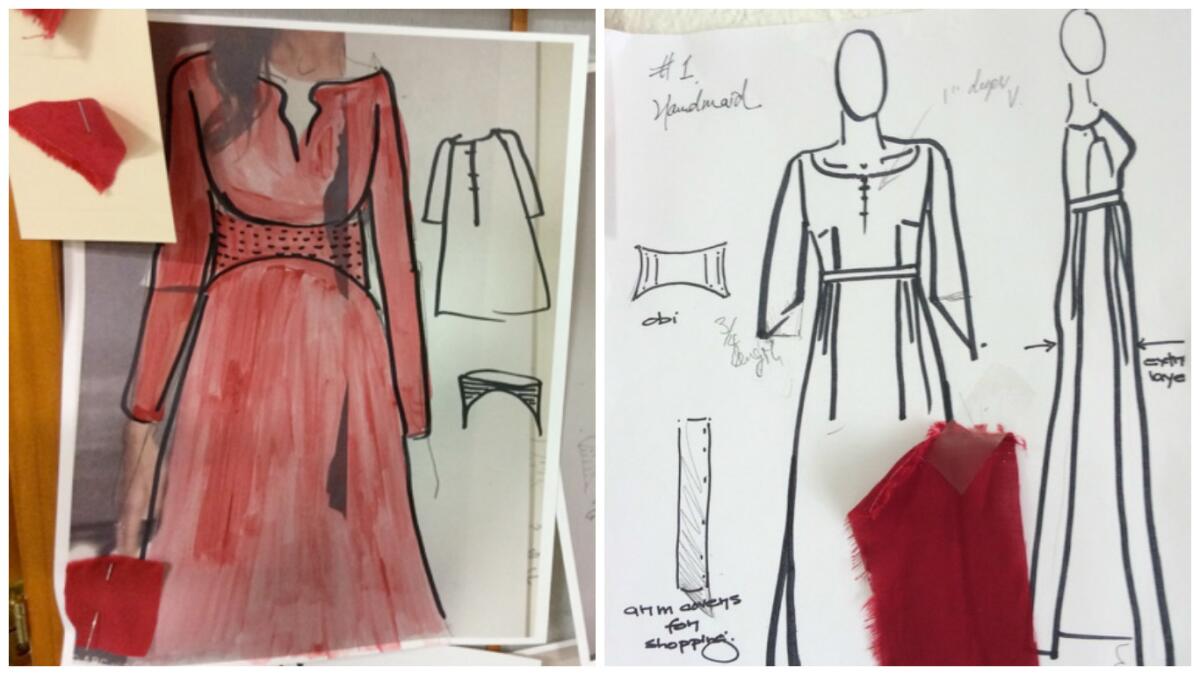
Designing for the end of the world
Crabtree found inspiration from a variety of sources, from repressive cultural regimes to the natural world to her own two feet.
The gowns had to be versatile and, though not evidenced in early episodes, had different versions depending on the season. In the first few episodes, the gowns are made of an extremely thin rayon that was available in the deep red color, meaning the fabric did not need the additional step of being dyed before construction.
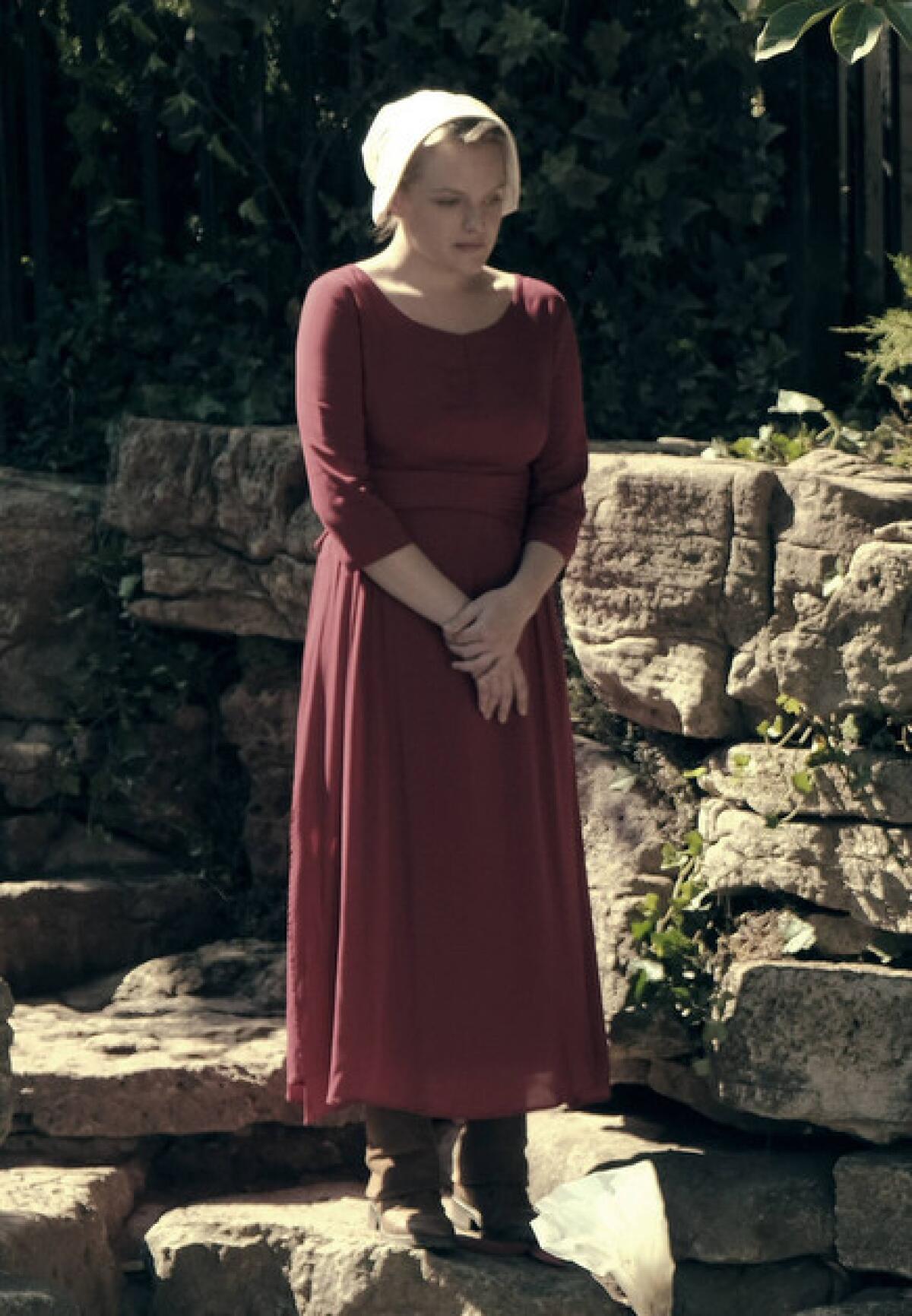
A handmaidâs wardrobe includes
- White caplet
- White wings (not pictured)
- Blood red gown
- Blood red wool cape (not pictured)
- White undergarments (not pictured)
- Brown boots
- Brown boot guards
Whatâs not there
Missing from the handmaid gowns are modern conveniences, like buttons, zippers, pockets and, darkly, shoelaces.
While pockets and shoelaces were removed as a way to keep a rebel populace in check, Crabtree had other reasons for excluding other details.
I visually erased details of clothing that we're all used to.
â Ane Crabtree
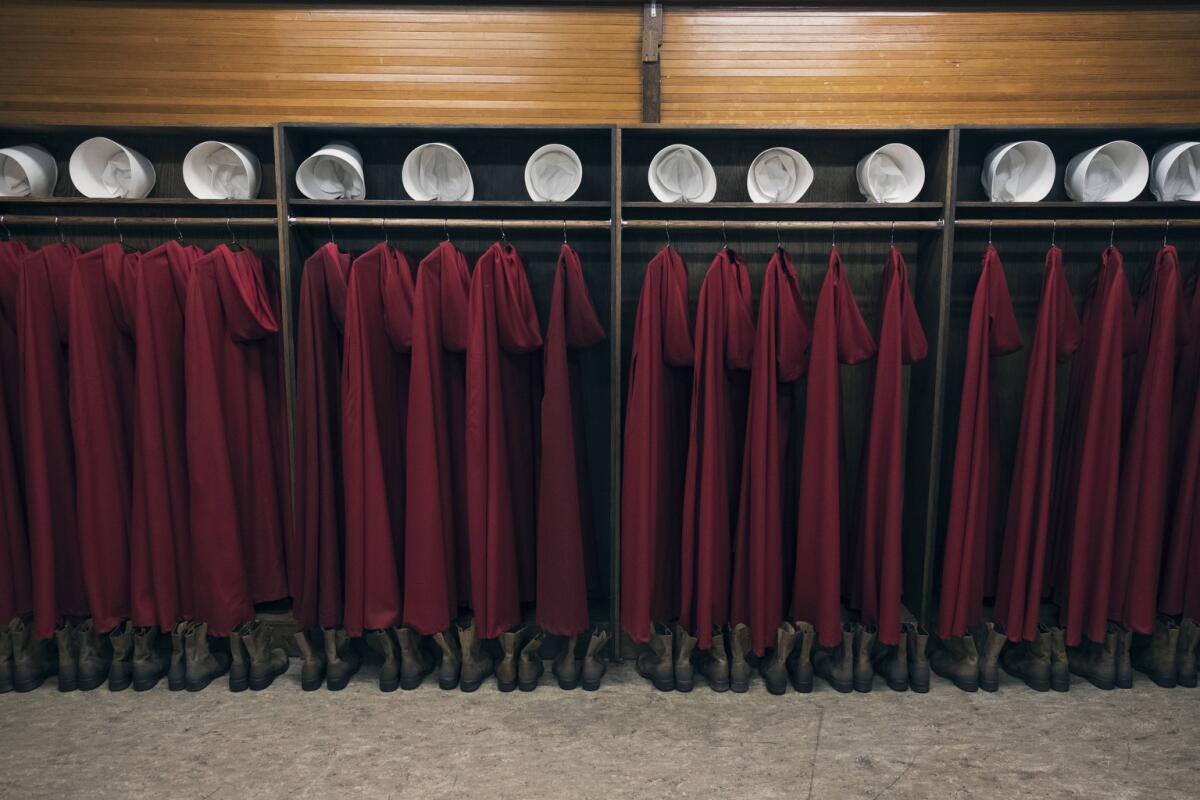
Costume haves and have-nots
Added
- Obi/corset
- Ear tag
- Modesty flap
DIY maternity wear
Because itâs a handmaidâs ultimate goal to become pregnant, it was a logical extension that their wardrobe be maternity-ready, a trick Crabtree managed by utilizing an obi belt or corset, depending on actress body type.
Below, Madeline Brewerâs character illustrates those small styling adjustments for pregnancy.
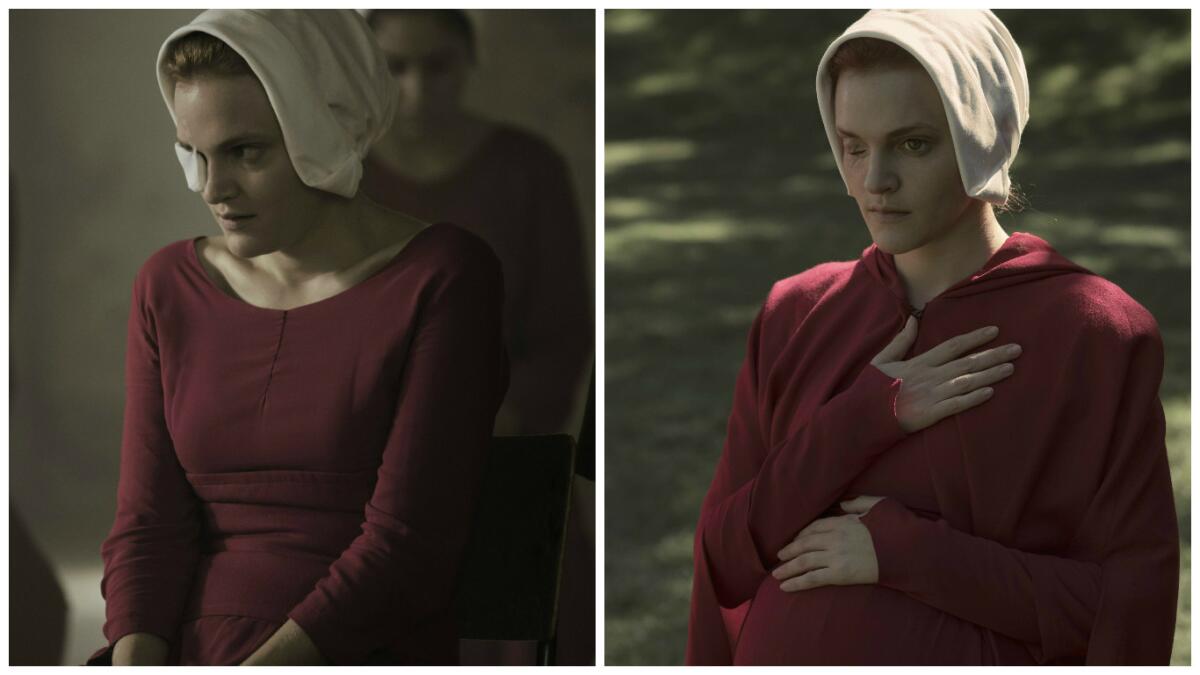
The best design is made to solve problems.
â Ane Crabtree
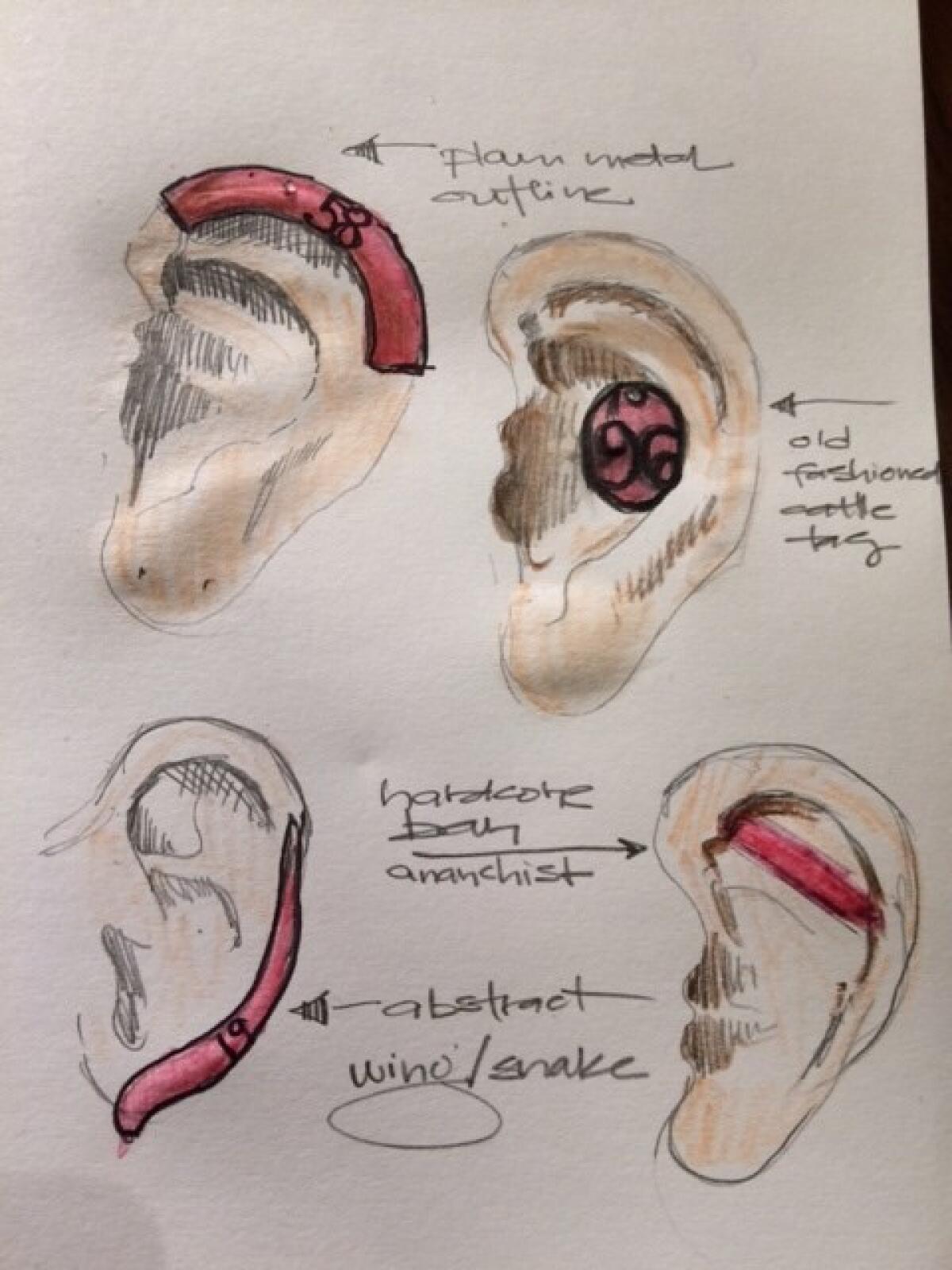
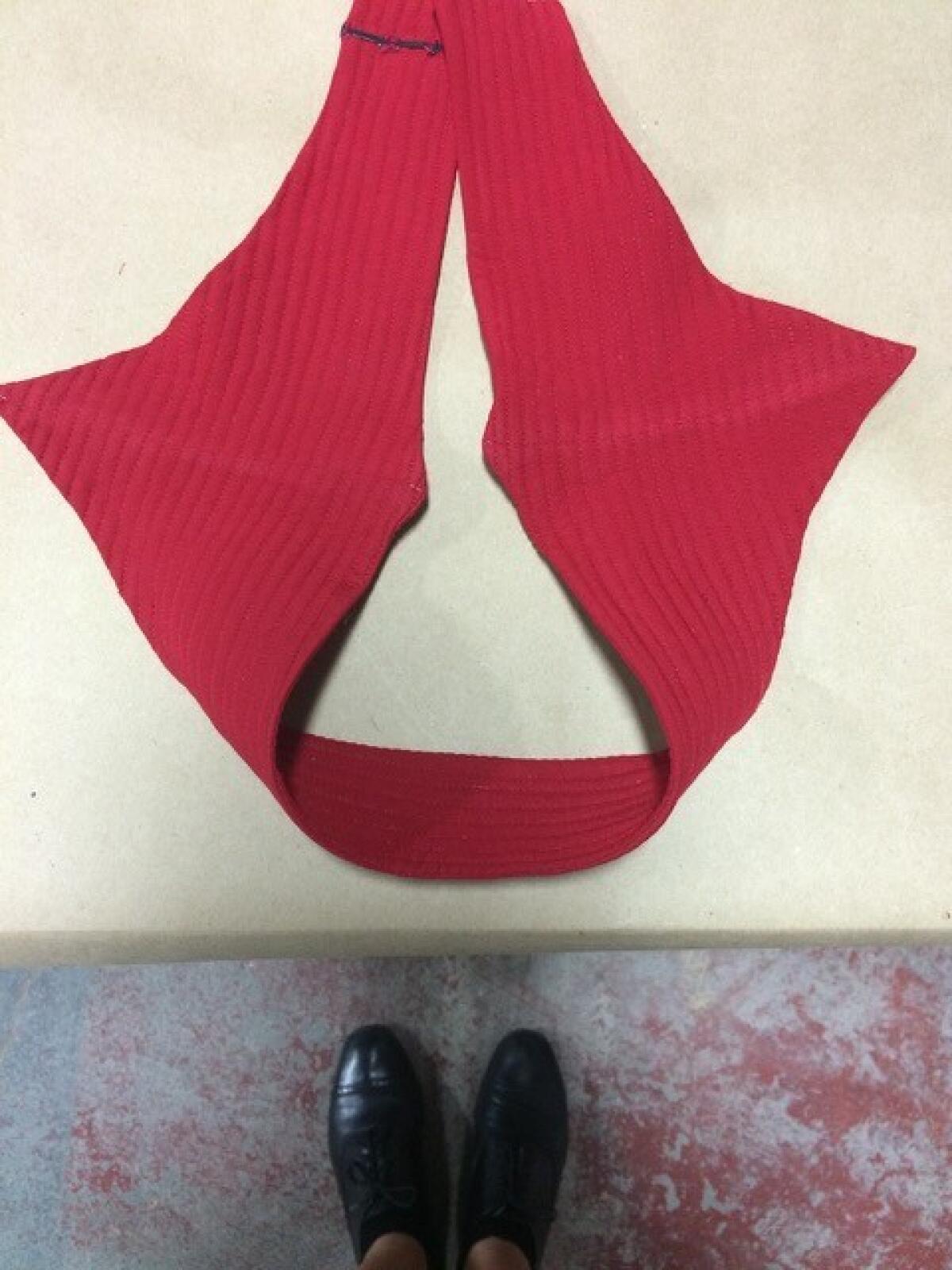
Beneath their wings
The iconic wings are actually a two-part affair. Underneath thereâs a caplet worn at all times, covering the hair, and over, a set of wings designed to shield them from view in public.
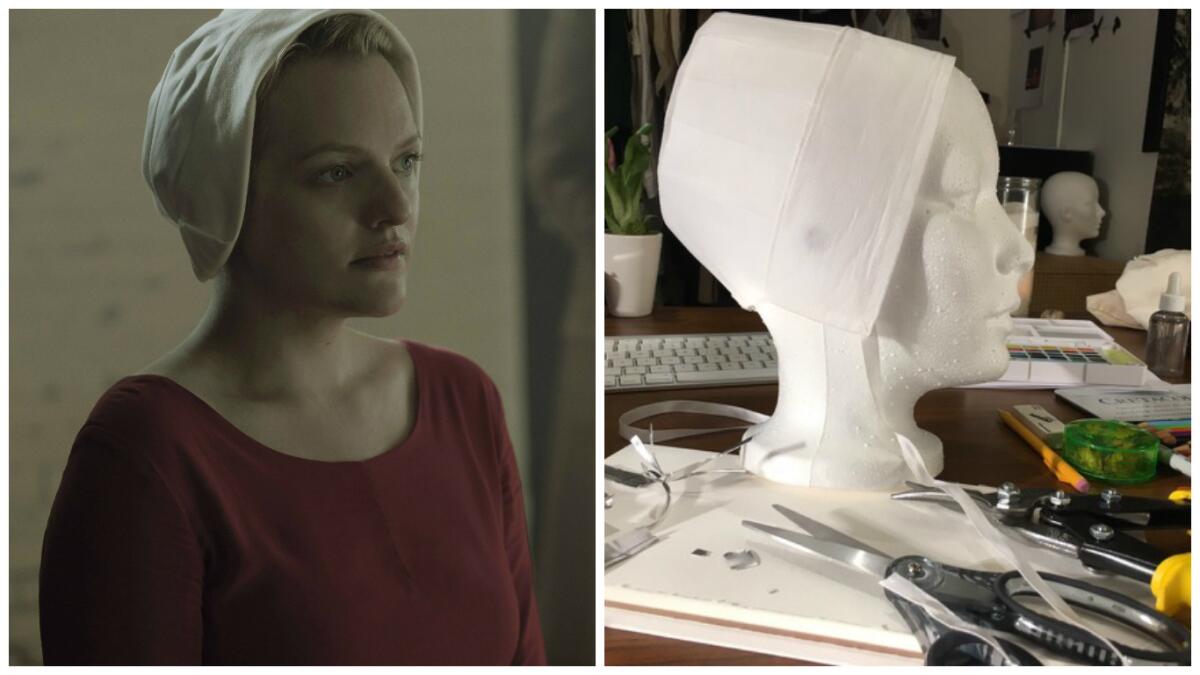
With a linen exterior, the wings provided enough diffuse light in outdoor shots to serve as modified light boxes on the actressesâ faces.
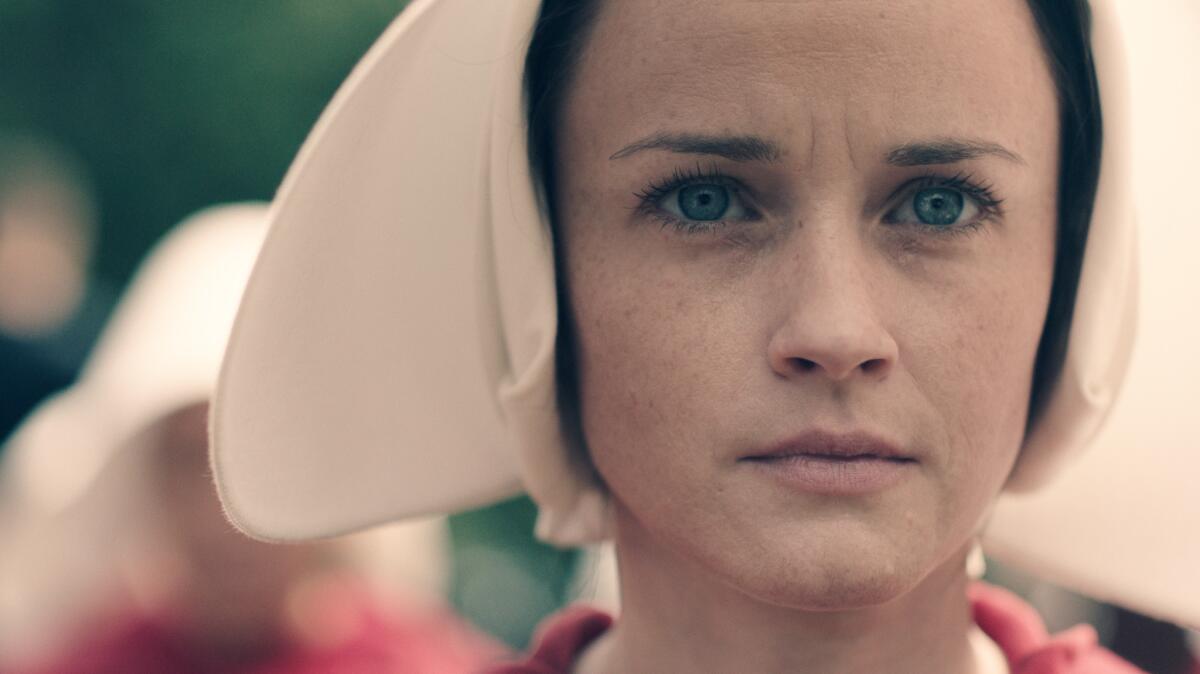
The muse
Crabtree had a secret weapon in Elisabeth Moss when it came to designing for âHandmaidâs Tale.â
The way Moss moved determined whether a fabric was appropriate; the way she used the wings determined whether or not they were tenable.
Lizzie [Moss] is a great scientist. She went through every trial to figure out what would work and she did something amazing with those wings.
â Ane Crabtree
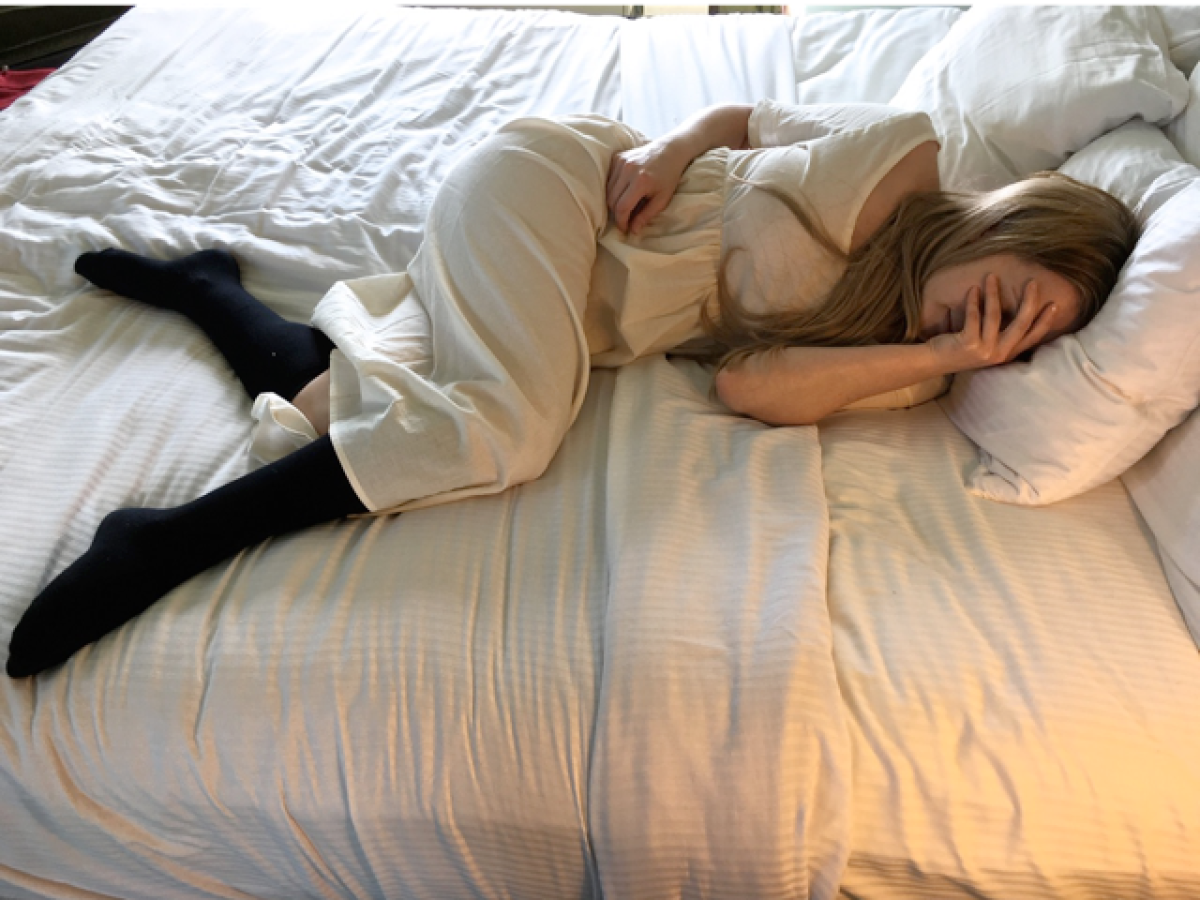
The complete guide to home viewing
Get Screen Gab for everything about the TV shows and streaming movies everyoneâs talking about.
You may occasionally receive promotional content from the Los Angeles Times.




